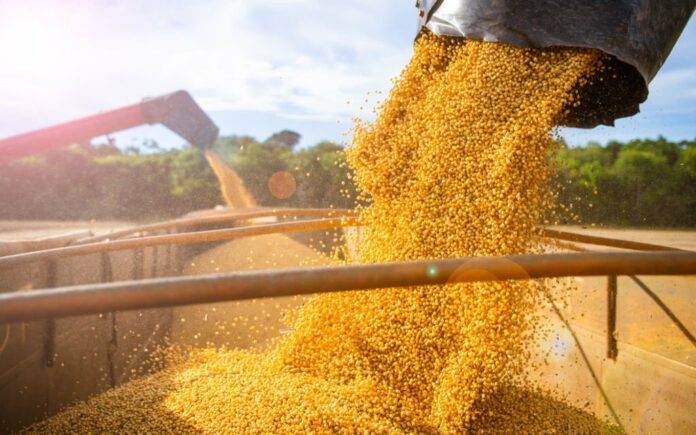The high-frequency data on both domestic and global markets reinforced our view that grain prices could be under pressure this year and that this, in turn, could lead to subdued food price inflation.
This past week, the International Grains Council (IGC) lifted its estimate for 2020/21 global maize production from the last monthly estimate to 1.2 billion tons, which is the largest harvest on record, and up 5% from the previous season.
The downward swing in global maize prices saw a 21% y/y decline by 25 June 2020, with prices trading around $162 per ton. Low global maize prices are probably going to remain the theme for the rest of the year.
The season is underway in the northern hemisphere, with the crop in most countries reportedly in good condition. Meanwhile, in the southern hemisphere, the 2020/21 production season will start around October 2020. The focus is still on the 2019/20 season, with the harvest process in full swing in all major southern hemisphere maize producing countries such as South Africa, Brazil and Argentina.
What’s more, all these countries are forecast to have large harvests, which will improve supplies ahead of another expected good 2020/21 season starting in October. In the case of South Africa, the maize harvest is estimated at 15.5 million tons, which is the second-largest harvest on record, and well above the annual domestic consumption of about 11 million tons.
This not only means that domestic maize prices could be under pressure in the coming months, but also that exports could also increase, which may positively boost the agricultural trade balance.
In terms of wheat, the IGC lifted its 2020/21 production estimate further from 766 million tons last month to a new record of 768 million tons. This is underpinned by the anticipated largest harvest in Russia, Canada, Australia, Argentina, China and India, amongst others.
While some European countries reported dryness last month, the weather conditions have now improved somewhat, specifically in the Black Sea region, which is conducive for the crop. As a consequence of the expected improvement in production, the 2020/21 global wheat stocks could increase by 6% y/y to 290 million tons.
This means that global wheat production could be under pressure in the coming months. On 25 June 2020, the global wheat price was down 8% y/y, at US$212 per ton (I’m using here the US Hard Red Winter wheat).
Wheat importing countries such as South Africa stand to benefit from such an optimistic outlook, more so, because South Africa’s 2020/21 season might lead to yet another small crop because of a potential reduction in area planted.
Planting is set to fall by 8% y/y to 495 000 hectares, mainly due to a decline in area in the Free State. This means that South Africa will continue to have a large dependence on imports, about 50% of annual consumption.
Rice prices could come down
In the case of rice, the 2020/21 global production was revised down marginally from 507 million tons last month to 505 million tons, which is still a record harvest. This is boosted by an expected large crop in India, Vietnam, Thailand, Indonesia and Bangladesh, amongst others.
The anticipated large production could subsequently lead to a 2% y/y increase in global rice stocks to 180 million tons. Similar to the aforementioned commodities, rice prices could also ease in the coming month. Global rice prices harvest already come off higher levels observed in April, where there were prospects of trade restrictions and a higher degree of uncertainty about the 2020/21 season harvest. South Africa, as a rice importing country, stands to benefit from this positive outlook. The IGC currently forecasts South Africa’s 2020 rice imports at 1.1 million tons, up by 10% y/y.
Soybeans are another important crop for global food security, as a key input in animal feed. The IGC forecasts 2020/21 global soybeans production at a new peak of 364 million tons, which is up 8% y/y. This is supported by expected large harvests in the US, Argentina and Brazil, amongst others. This expected uptick in production could lead to a 3% y/y increase in stocks to 45 million tons.
This means, the global soybeans prices could also be under pressure in the coming months, but this could be eased by a rapid push to rebuild the Chinese pig industry, which has been devastated by the African Swine Fever. We doubt that might be the case though. From a South African perspective, the country stands to benefit as it imports around half a million tons of soybean oilcake (meal). On average, 97% of soybean meal originated from Argentina over the past 10 years.
These positive global grain and oilseed prospects support our view that food price inflation could be subdued this year, hovering around 4% y/y (from an average of 3.1% y/y in 2019). The key upside risk within the food price inflation basket will mainly be meat, in part, because of base effects and a possible uptick in poultry prices following the recent increase in import tariffs.
Overall, however, grains, and also fruit prices could offset the potential increases in inflation and keep the headline number at lower levels.
Wandile Sihlobo is chief economist of the Agricultural Business Chamber of South Africa (Agbiz) and author of FINDING COMMON GROUND: Land, Equity and Agriculture.
